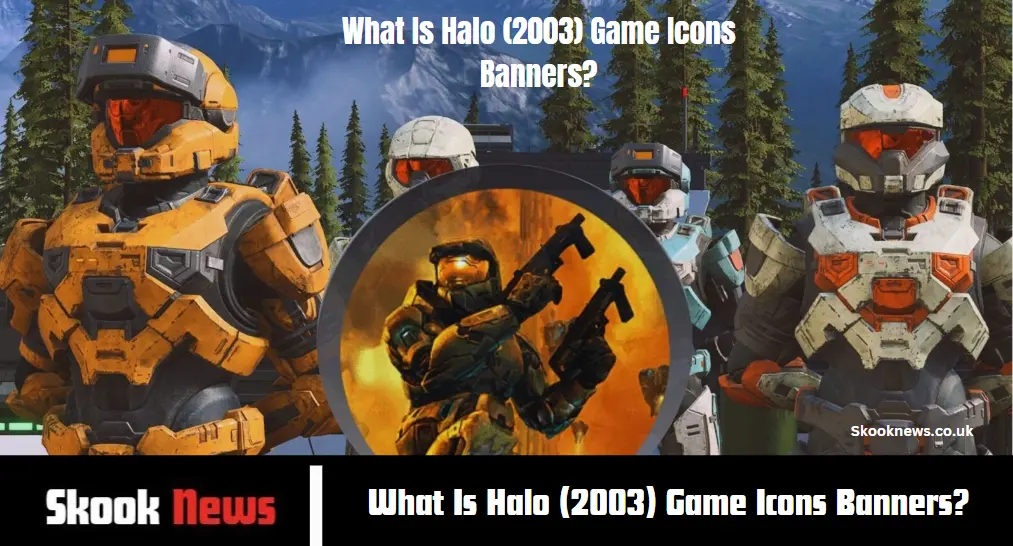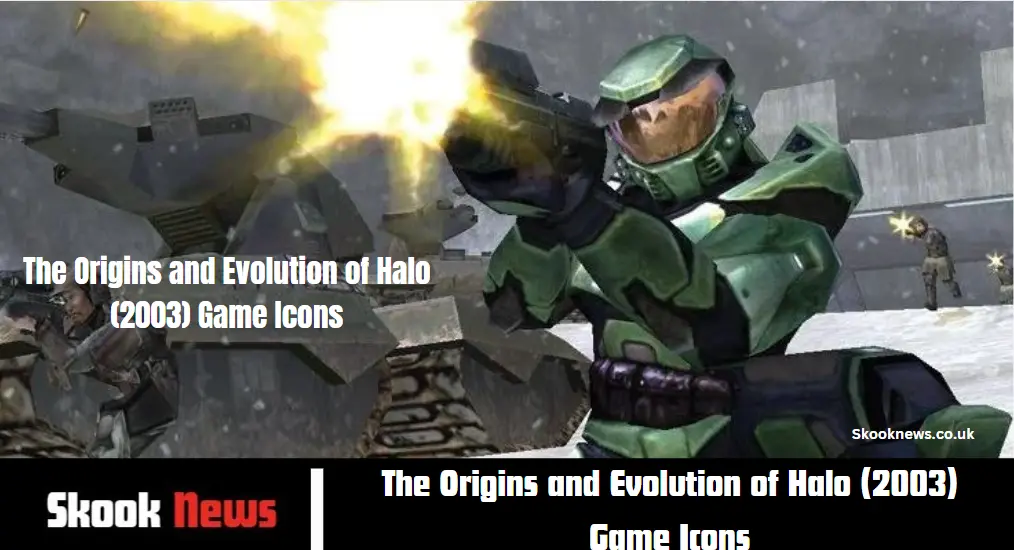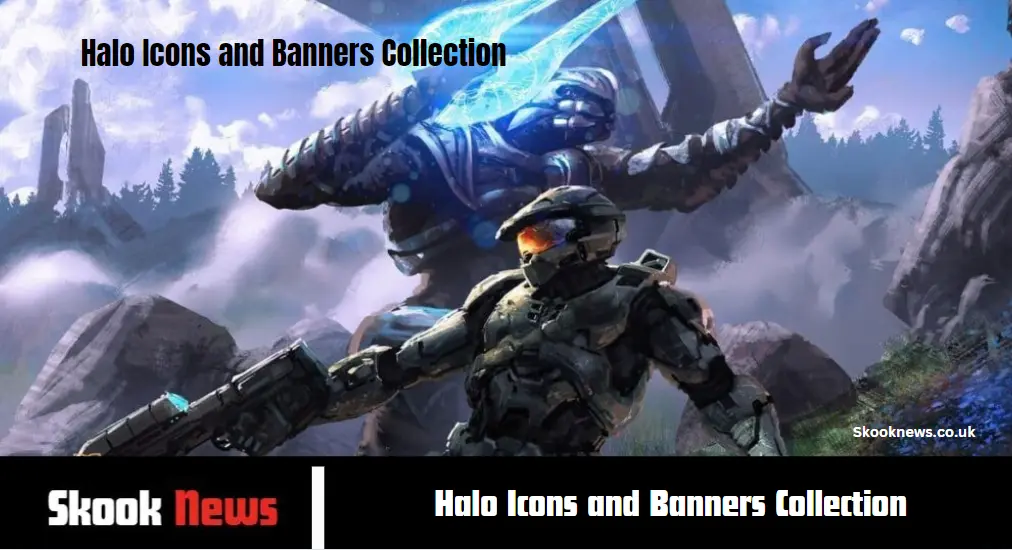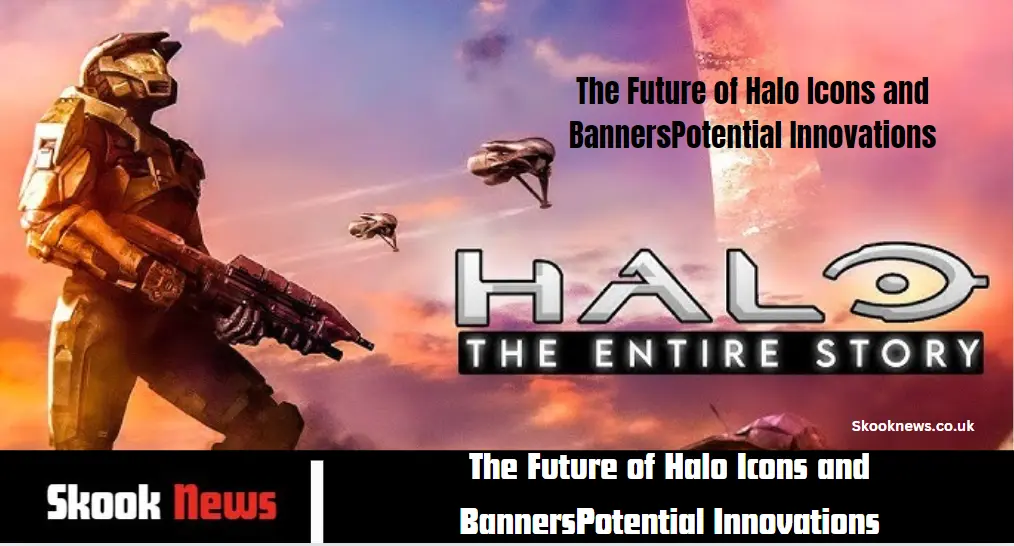Halo, the iconic first-person shooter game released in 2001, has become synonymous with the gaming world’s elite. Developed by Bungie Studios and published by Microsoft Game Studios, Halo revolutionized the gaming landscape with its compelling storyline, groundbreaking graphics, and innovative multiplayer gameplay. Set in the 26th century, players assume the role of Master Chief, a supersoldier battling the alien Covenant forces to save humanity.
Halo’s impact extends far beyond its gameplay; it has transcended into pop culture, spawning a vast universe of novels, comics, and even a live-action series. Its distinctive iconography, featuring the iconic Spartan helmet, has become instantly recognizable to gamers worldwide.
The game’s success has led to numerous sequels, each building upon the rich lore and gameplay mechanics established in the original. With its unparalleled blend of immersive storytelling and exhilarating action, Halo stands as a towering pillar in the pantheon of gaming icons.
What Is Halo (2003) Game Icons Banners?

In the context of the Halo series, “Game Icons Banners” likely refers to the various visual elements associated with the game that have become iconic representations of the franchise. This could include:
- The Halo Logo: The stylized “Halo” wordmark with its distinctive font and design.
- Master Chief: The armored protagonist of the series, often depicted in various poses or wielding weapons.
- The Spartan Helmet: A symbol of the series, the iconic Spartan helmet is instantly recognizable to fans.
- Covenant and Promethean Symbols: Visual representations of the alien races and factions in the game, such as the Covenant’s emblem or the Promethean’s design.
- Weaponry and Vehicles: Iconic weapons like the Energy Sword or the Warthog vehicle have become synonymous with the Halo experience.
These banners are used in promotional materials, box art, merchandise, and marketing campaigns to evoke the essence of the Halo universe and its characters, attracting and engaging franchise fans.
Read More: Unveiling The Trulife Distribution Lawsuit
History of Halo (2003) Game Icons Banners
The history of Halo’s game icons and banners traces back to the franchise’s inception with the release of “Halo: Combat Evolved” in 2001 for the original Xbox console. Developed by Bungie Studios, the game introduced players to the iconic character Master Chief, a genetically enhanced supersoldier clad in powered armor, and immersed them in an epic sci-fi universe.
From the outset, the game’s logo became a recognizable symbol, featuring the word “Halo” in a distinctive font with a circular design reminiscent of the titular Halo rings. This logo adorned game covers, promotional materials, and merchandise, serving as the franchise’s flagship visual identifier.
Additionally, the Spartan helmet, worn by Master Chief and other characters in the game, emerged as another prominent icon. Its sleek design and futuristic aesthetic captured the imagination of players and became synonymous with the Halo universe. The helmet appeared not only on game covers but also in marketing campaigns, trailers, and various merchandise, solidifying its status as a franchise symbol.
Over the years, as the Halo series expanded with sequels, spin-offs, novels, and other media, these iconic elements continued to evolve and increase. Covenant and Promethean symbols, representing alien races and factions in the game, also became recognizable icons within the Halo universe.
Halo (2003) Game Icons Banners
Released in 2003, Halo: Combat Evolved stands as a transformative force in the first-person shooter genre, leaving an indelible mark on the identity of the Xbox console. Among its myriad influences contributing to its enduring legacy lies the meticulous design and strategic deployment of game icons and banners. These visual components transcend aesthetic appeal, elevating gameplay immersion to unprecedented levels.
This comprehensive guide explores the captivating realm of Halo (2003) game icons and banners, meticulously dissecting their evolutionary trajectory, intricate design principles, and profound functional significance. Through a nuanced examination, we aim to unveil the profound impact these visual elements wield as branding tools and vital conduits for player engagement and narrative enrichment within the iconic Halo universe.
The Origins and Evolution of Halo (2003) Game Icons

The emergence of Halo:
Combat Evolved in 2003 marked a pivotal moment in gaming history. It introduced a distinctive visual style that gave rise to a plethora of iconic symbols. Deliberately crafted to enrich the user interface and gameplay experience, these symbols were essential navigational aids within the game’s intricate environments and intense combat scenarios.
As the Halo series progressed, so did its game icons’ evolution. Initially characterized by simplicity, these icons prioritized clarity and functionality. However, graphic design and gaming technology advancements spurred a transformative shift, leading to the emergence of more intricate and visually captivating symbols. This evolution was not merely a matter of aesthetics; it mirrored the ever-expanding complexity and depth of the game mechanics, ensuring that players remained immersed in the evolving world of Halo.
The Significance of Halo (2003) Game Banners
In Halo, game banners transcend mere decorative elements; they serve as indispensable tools for communication and strategy within the gameplay. These banners play multifaceted roles, representing teams, objectives, or significant locations, aiding players in orienting themselves and coordinating their actions effectively.
Crafting and customizing banners in Halo demands a deep understanding of the game’s themes and motifs. Players can design banners that mirror personal or team identities, utilizing colors, symbols, and patterns. With customization options at their disposal, players can create distinctive visual markers that enhance their gaming experience and foster a sense of identity and camaraderie among team members.
Functional Role of Icons and Banners in Halo Gameplay
Icons and banners in Halo gameplay serve a crucial functional role, extending beyond mere visual adornments to profoundly impact the player’s experience. Here’s how they contribute:
- Navigation and Orientation: Icons and banners often indicate important locations, objectives, or team positions on the game map. This aids players in navigating complex environments and orienting themselves amidst fast-paced action.
- Communication: Banners serve as visual cues for team communication, allowing players to quickly convey information about targets, strategies, or tactical movements without relying solely on verbal communication.
- Strategy and Coordination: By representing teams, objectives, or critical areas, icons and banners facilitate strategic planning and coordination among players. They help organize team efforts, coordinate attacks, and defend strategic positions.
- Customization and Personalization: The ability to customize icons and banners allows players to personalize their gameplay experience. This fosters a sense of individuality and enhances team cohesion as players identify with their customized symbols.
- Feedback and Awareness: In multiplayer modes, icons and banners provide feedback on teammates’, objectives’, and enemy movements’ status. This awareness is vital for making split-second decisions and adapting strategies.
Icons and banners in Halo gameplay serve as integral tools for communication, strategy, and immersion, enriching the gaming experience and contributing to the franchise’s enduring appeal.
Designing Effective Halo Banners
Designing effective Halo banners requires careful consideration of both aesthetic and functional elements to ensure they serve their intended purpose within the gameplay. Here are some fundamental principles to follow:
- Clarity and Readability: Banners should be easily recognizable and distinguishable, even amid chaotic action. Use precise, bold shapes and high-contrast colors to enhance visibility.
- Symbolism and Meaning: Incorporate symbols and imagery that convey relevant information or represent critical elements of the game, such as team emblems, objectives, or strategic locations.
- Consistency and Cohesion: Maintain a consistent visual style throughout all banners to create a cohesive visual language. This helps players quickly interpret and understand the meaning behind each banner.
- Customization Options: Provide players with customization options to personalize their banners according to their preferences or team affiliations. This fosters a sense of ownership and identity among players.
- Scale and Placement: Ensure that banners are appropriately sized and strategically placed within the game environment to maximize their visibility and effectiveness. Avoid cluttering the screen with excessive banners that may distract or overwhelm players.
- Feedback Mechanisms: Use banners to provide feedback to players, such as indicating the status of objectives, the presence of enemies, or the location of teammates. This helps players make informed decisions and adapt their strategies accordingly.
By adhering to these design principles, Halo banners can effectively enhance the gameplay experience, aiding in navigation, communication, and strategic coordination while also contributing to the overall immersion and enjoyment of the game.
Halo Icons and Banners Collection

- Spartan Shield: Emblematic of defense and resilience, utilized across various player interfaces.
- Covenant Crest: Intricately designed and alien, symbolizing the primary antagonist group in the game.
- Energy Sword: Signifying honor and close combat prowess among the Elites, a formidable weapon within the Halo universe.
- ODST Banner: Represents the Orbital Drop Shock Troopers, celebrated for their courage and stealth abilities.
- Forerunner Sigil: Mysterious and ancient, suggesting advanced technology beyond human understanding.
- UNSC Flag: The standard of the human military organization, commonly seen in bases and ships throughout the game.
- Flood Icon: Conveys terror and chaos, embodying the parasitic antagonist species within the Halo narrative.
How to Create Attractive Banners for Halo (2003) Game Icons
Creating attractive banners for Halo (2003) game icons involves a combination of creativity, design principles, and an understanding of the game’s themes. Here’s a step-by-step guide:
- Research and Inspiration: Familiarize yourself with the Halo universe, including its lore, characters, and visual style. Look for inspiration in official artwork, concept designs, and fan creations.
- Define Purpose and Theme: Determine the purpose of your banner and the theme you want to convey. Are you creating a banner for a specific team, character, or concept? Clarifying your objectives will guide the design process.
- Choose Iconography: Select iconic symbols or imagery that represent your chosen theme. This could include weapons, vehicles, characters, or faction emblems from the Halo universe.
- Design Layout: Sketch out different layouts for your banner, considering composition, balance, and hierarchy. Experiment with placing text, icons, and background elements to create a visually appealing design.
- Color Scheme: Choose a color palette that complements the theme of your banner and aligns with the Halo aesthetic. Consider using colors associated with specific factions or environments within the game.
- Typography: Select appropriate fonts for any text elements on your banner. Ensure readability and cohesion with the overall design theme.
- Add Detail and Effects: Enhance your banner with additional details, textures, or effects to make it visually engaging. This could include gradients, shadows, highlights, or weathering effects to add depth and realism.
- Test and Refine: Review your banner design and make any necessary adjustments to improve clarity, balance, and visual impact. Test the design at different sizes to ensure readability and effectiveness.
- Finalize and Export: Once you’re satisfied with your banner design, finalize it by saving or exporting it in the appropriate file format. Consider creating multiple versions for different purposes or platforms.
- Feedback and Iteration: Seek input from peers or the Halo community to gather insights and suggestions for improvement. Use this feedback to iterate on your design and refine it further.
Following these steps and exercising your creativity, you can create attractive banners that enhance the Halo (2003) gaming experience and captivate players with compelling visuals.
Enhancing the Halo Experience with Icon Packs and Mods
Enhancing the Halo experience through icon packs and mods is popular among players looking to customize and augment their gameplay. Here are some ways these additions can enrich the Halo universe:
- Visual Customization: Icon packs allow players to personalize their gaming experience by replacing default icons with custom designs that better suit their preferences or align with specific themes. This adds a layer of visual diversity and personalization to the game.
- Theme Integration: Mods can introduce new thematic elements into Halo gameplay, such as changing weapon skins, altering character models, or adding themed levels. These modifications enable players to explore different aesthetics and narratives within the Halo universe.
- Gameplay Enhancements: Some mods introduce gameplay tweaks or enhancements that alter the dynamics of Halo matches. This can include rebalancing weapons, introducing new game modes, or adding additional features that enhance replayability and enjoyment.
- Community Engagement: Icon packs and mods foster a vibrant modding community within the Halo fanbase, encouraging collaboration, creativity, and content sharing. Players can discover and download mods created by fellow enthusiasts, expanding the game’s longevity and appeal.
- Experimental Content: Mods provide a platform for experimentation and innovation, allowing players to test new ideas and concepts that may not be present in the official Halo releases. This fosters a spirit of exploration and discovery within the community.
- Revitalizing Older Titles: Icon packs and mods can breathe new life into older Halo titles by introducing fresh content, improving graphics, or addressing gameplay issues. This revitalization ensures that classic Halo games remain relevant and enjoyable for years.
Overall, icon packs and mods are powerful tools for enhancing the Halo experience, allowing players to customize, innovate, and engage with the franchise in new and exciting ways.
The Future of Halo Icons and BannersPotential Innovations

The future of Halo icons and banners holds promising prospects, particularly with the anticipated release of Halo Infinite. Here’s a glimpse into what lies ahead:
- Innovative Designs: With technological advancements and graphic capabilities, Halo icons and banners are poised to evolve further. Expect more intricate designs, dynamic animations, and enhanced visual effects that elevate the immersive experience.
- Interactive Elements: Future Halo titles may incorporate interactive elements into icons and banners, allowing players to interact with them directly within the game environment. This could involve customizable banners that react to player actions or provide real-time feedback during gameplay.
- Integration with Social Features: As gaming becomes increasingly social, Halo icons and banners may integrate with social features, enabling players to share and showcase their customized designs with friends and the broader gaming community. This fosters greater player engagement and community interaction.
- Augmented Reality and Virtual Reality: With the rise of augmented reality (AR) and virtual reality (VR) technologies, Halo icons and banners could extend beyond the confines of the screen, manifesting in the player’s physical environment through AR overlays or immersive VR experiences.
- User-generated Content: Halo’s vibrant modding community will continue to play a significant role in shaping the future of icons and banners. Expect to see a proliferation of user-generated content, including custom icon packs, banner designs, and mods that offer new ways to personalize and enhance the Halo experience.
- Integration with Cross-platform Play: As cross-platform play becomes more prevalent, Halo icons and banners may need to adapt to ensure consistency and compatibility across different gaming platforms. This involves designing icons and banners that are scalable, adaptable, and seamlessly integrated across various devices and platforms.
The future of Halo icons and banners holds exciting possibilities, driven by technological advancements, community creativity, and gaming’s ever-evolving nature. With Halo Infinite on the horizon, fans can look forward to a new era of iconic designs and immersive experiences within the Halo universe.
Potential Innovations
While exact predictions are challenging, several exciting opportunities for the future of Halo icons and banners include:
- Dynamic Icons: Icons that adapt based on in-game conditions, such as changing appearance according to weapon status or environmental factors, could significantly enhance gameplay immersion.
- Interactive Banners: Banners that react to player actions or in-game events, providing real-time information and feedback, have the potential to enrich the gaming experience by offering dynamic and responsive elements.
- Expanded Customization Options: With advancements in technology, players may have access to more robust customization tools, allowing for the creation of highly personalized icons and banners. This increased flexibility could empower players to express their unique identities within the Halo universe.
Frequently Asked Questions
What are Halo (2003) game icon banners?
Halo (2003) game icon banners are visual elements within the game, including symbols, emblems, and markers that serve various purposes such as navigation, communication, and customization.
How do Halo icons and banners enhance gameplay?
Halo icons and banners enhance gameplay by providing necessary information, aiding navigation, facilitating communication between players, and allowing for customization of the gaming experience.
Can players customize icons and banners in Halo?
Yes, players can often customize icons and banners in Halo games, allowing them to personalize their gaming experience by choosing different colors, symbols, and designs.
What is the significance of icons and banners in Halo?
Icons and banners in Halo are significant for communication, strategy, and immersion within the game. They help players navigate the game world, coordinate with teammates, and understand gameplay objectives.
How have Halo icons and banners evolved?
Halo icons and banners have evolved to become more visually appealing, functionally diverse, and customizable. Advances in technology have enabled developers to create more intricate designs and incorporate interactive elements into these visual elements.
Conclusion
The Halo (2003) game icon banners have played a pivotal role in shaping the immersive experience of the Halo franchise. From their inception in the groundbreaking Halo: Combat Evolved, these visual elements have become more than just decorative features—they are essential tools for navigation, communication, and customization within the game world.
Over the years, Halo icons and banners have undergone significant development, reflecting advancements in technology and players’ changing needs. From simple yet practical designs to dynamic and interactive elements, they have continually enhanced the gameplay experience, contributing to the franchise’s enduring popularity.
